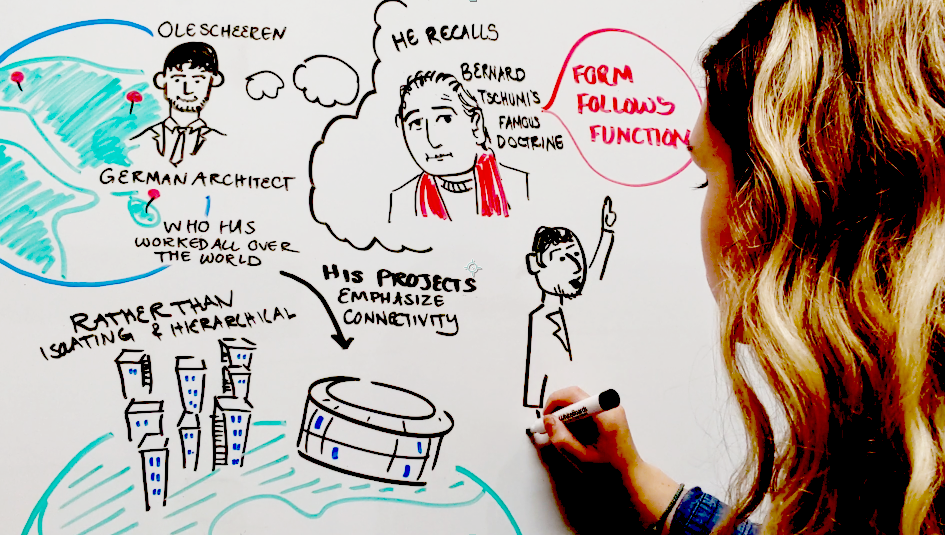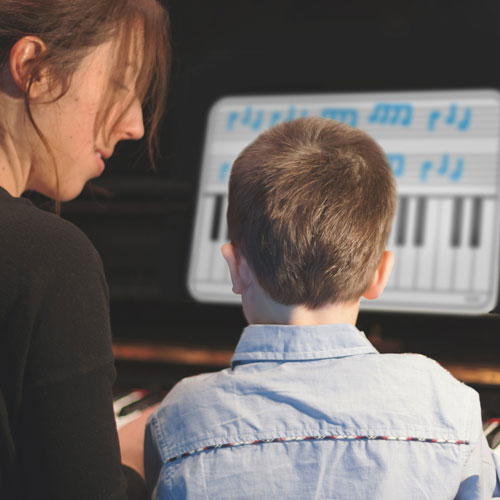
Learn to incorporate sketchnoting in 6 easy steps. This “How-To” article is for teachers, vloggers, visual learners or anyone who is interested in pairing doodles with notes. I am your average “sketchnoter” who has gathered the know-how from the great sketchnoting community and hope to share my ability with inquiring minds.
Why Sketchnoting Is Better
There is hard evidence confirming that doodling can help you pay attention. There are apps designed to help you remember things better by flashing emojis with alarms. For example, a car emoji will pop up when it’s time to leave! The effects of visual learning are tremendous.
Those who sketchnote professionally are called “Visual Facilitators," “Scribers,” or “Graphic Recorders.” They will typically be contracted out for organizational meetings. Every Graphic Recorder works differently, from the preparation to the medium they work on. You don’t have to become a professional Graphic Recorder to delve into sketchnoting. Some of my favorite professional visual facilitators include Yuri Malishenko, Brandy Agerbeck, Matt Orley, Marcus De Vale and Phil Jinglun Guo.
1. Approach for Sketchnoting
The misconception about sketchnoting is that you need to be “artistic” to be good at it. This is not true. If you have a basic understanding of shapes and colors, you will be great at this. Sixty-five percent of us are visual learners. But don’t get hung up if you are in the other thirty-five percent. We’ve been drawing since we were Neanderthals. It is in our nature. Kinesthetic learners can still create “artifacts” for beholders to enjoy and learn from.
2. Practice Sketchnoting
I have been able to build a basic understanding of design through my own research. It sounds intimidating but all “design” really is, is space, line, form, light, color, texture and pattern. Understand that you’re a unique individual so your “lines” and “shapes” probably won’t look like anyone else’s.
Resources
- Pinterest is a great way to get ideas. I look up sketchnoting tips or doodling ideas and I compile all of that in my board that I’ve linked here.

- Scriberia on Youtube will teach you how to draw anything with only 12 shapes. I’ve linked their channel here.

When I start a new sketchnoting project, I play around with my markers by drawing shapes with different colors to see how it would look on my lapboard. I’ll try to use at least 3 different colors, but each project always uses a dark marker and a lighter marker. I find this is a great way to make the important things pop!

3. Define Your Goal
What is the purpose of your sketchnoting project? This will help you determine which markers to use, what medium you’d like to draw on, how you will be positioned (on a chair or standing up,) how much time to allocate and so on.
For example, if you are a teacher, you’re probably going to be speaking and scribing at the same time. If you are a vlogger, you’ll probably want to use markers that show up well on camera. I am a vlogger, so I like to use a whiteboard, draw standing up and use vibrant colors that pop on camera.
4. Draft Your Project
In the draft stage, I highly suggest typing out your research on a document so that you can reference it while you are sketchnoting. You can always use a lapboard or regular paper for this.

Some people are comfortable with ad-libbing, but I like to know exactly what I want to write since I can’t really spend a ton of time pondering during my videos. Thus, I proof the draft so that it is clear and succinct. I also leave space with each sentence so that when I print it, I can go back and brainstorm what visual I was to feature.
5. Set Your Bounds
Now it’s time to pick up your marker and give yourself boundaries. This always helps me answer questions about scale.
- How big do I want to write?
- How much room should I leave between these 2 sections?
- How should I space out the visuals so that it doesn’t look congested?
This is also a great time to narrow down which markers you’ll be using and do a couple of practice visuals or sentences.
- Get a feel for the quality of the markers, transitioning between writing and drawing and how comfortable you are in your sketchnoting position. Make adjustments as needed.
 |
 |
6. Go For It
Sometimes starting feels like the hardest part. But once you make the first mark, you’ll be off to a great start. Here are some tips to keep in mind during your sketchnoting process:
- Every 30–60 seconds, step back and quickly scan the entire writing area to ensure that you’re not drifting. After a while, I always find myself writing on a downward angle.
- Drink water and take short 20 second breaks. Sketchnoting doesn’t require any “athleticism” but it can get tiring. Especially for larger projects on writing spaces over 2' x 3’ feet.
- Dress comfortably, especially if you’re on camera. It may look weird if you take your jacket off in the middle of a video.
- Just for reference, it takes me about 30–40 minutes to complete a 2' x 3’ section of my Opti-Rite® Sheet.
- If this is your first sketchnoting project it will definitely not be perfect. Have fun and try really hard not to judge yourself.
Here is an example of one of my finished sketchnoting videos!
https://youtu.be/L-TvWQS0b5U





